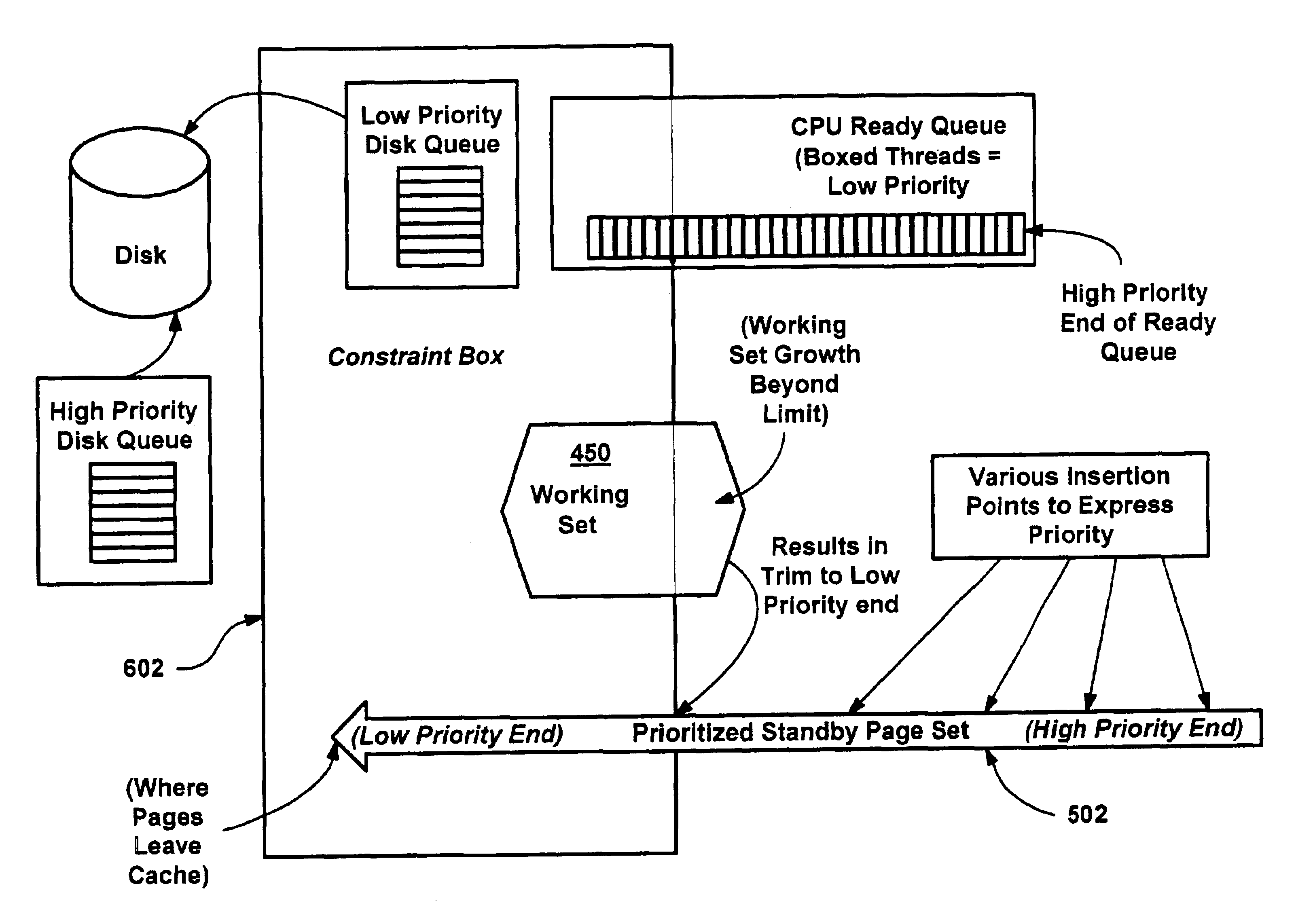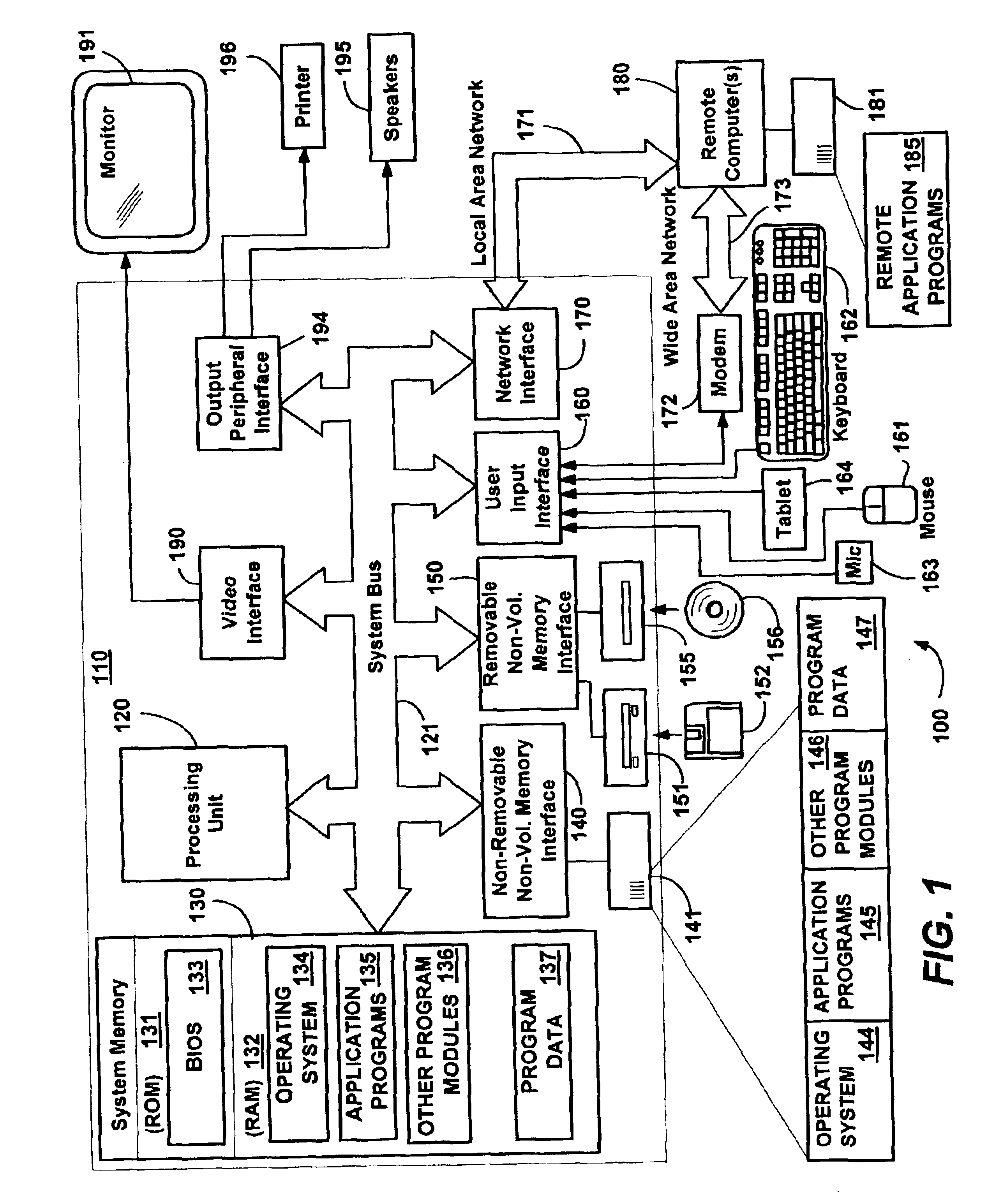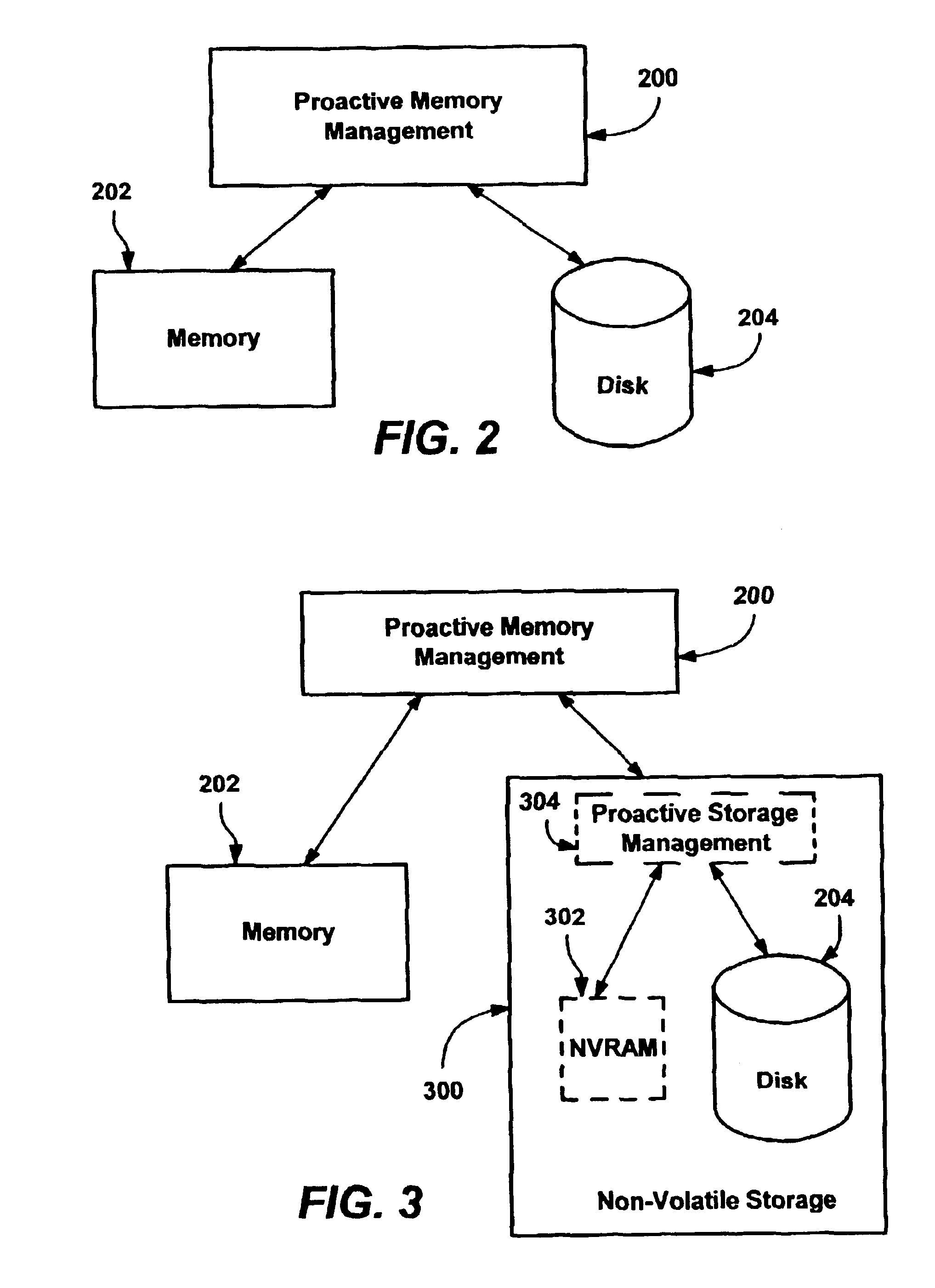Methods and mechanisms for proactive memory management
- Summary
- Abstract
- Description
- Claims
- Application Information
AI Technical Summary
Benefits of technology
Problems solved by technology
Method used
Image
Examples
example implementations
[0063]At least one example implementation of the present invention described below was implemented on a modified system running Microsoft Corporation's Windows® XP SP1 operating system and the Windows® NTFS file system. Notwithstanding, there is no intention to limit the present invention to any particular operating system or type of memory management, but on the contrary, the present invention is intended to operate with and provide benefits with any computer having memory managed by a memory management system, because the present invention includes is a speculative and intelligent cache management scheme. Moreover, although an example implementation was arranged with a disk drive as a secondary store from which the memory is loaded, it should be readily apparent that the secondary store is not necessarily a disk drive, and includes alternatives such as flash memory, a network data source, a tape drive or virtually any type of data store, and in fact a computer system that is compl...
PUM
 Login to View More
Login to View More Abstract
Description
Claims
Application Information
 Login to View More
Login to View More - R&D
- Intellectual Property
- Life Sciences
- Materials
- Tech Scout
- Unparalleled Data Quality
- Higher Quality Content
- 60% Fewer Hallucinations
Browse by: Latest US Patents, China's latest patents, Technical Efficacy Thesaurus, Application Domain, Technology Topic, Popular Technical Reports.
© 2025 PatSnap. All rights reserved.Legal|Privacy policy|Modern Slavery Act Transparency Statement|Sitemap|About US| Contact US: help@patsnap.com



